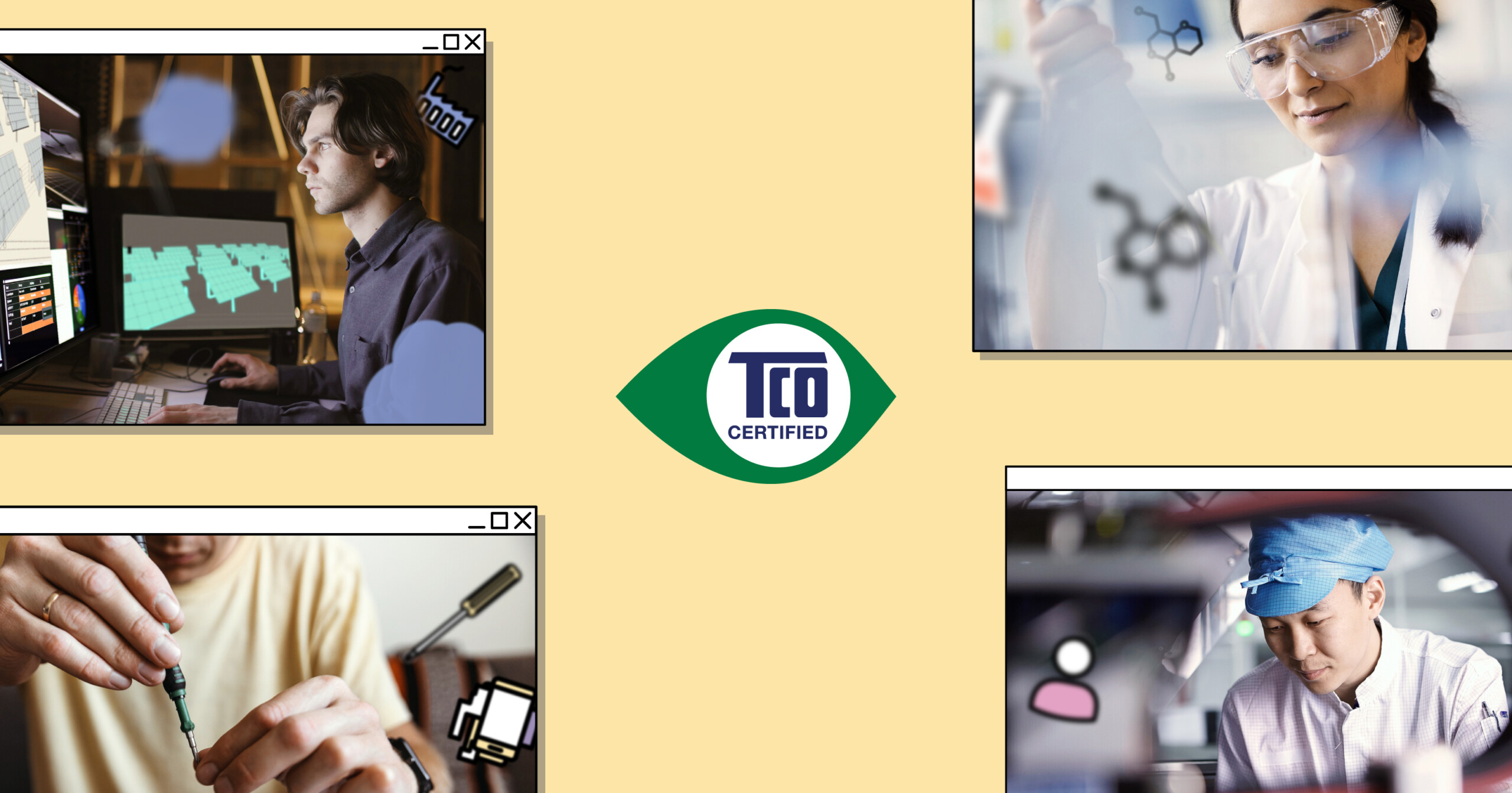Five keys to implementing your sustainable IT strategy
Sustainable IT is a broad topic that includes both environmental and social sustainability throughout the product life cycle. Doing it right can help your organization reduce risks, lower costs and improve business results.
Today’s IT products are manufactured and used in a mainly linear way, which leads to the depletion of valuable and sometimes scarce natural resources, a large climate impact and enormous amounts of e-waste. Major social problems such as health hazards, excessive overtime and human rights violations also occur throughout the supply chain. By developing a sustainable, circular strategy for IT procurement, organizations can lower their impact and reduce costs connected to its IT usage1. Paying attention to sustainability can in some cases also lead to better business results, and more profit2.
Sustainable IT strategy – 5 key aspects
1. Include environmental AND social sustainability
A sustainable IT strategy should cover all major sustainability challenges throughout the product’s life cycle, including environmental risks such as pollution and greenhouse gas emissions, as well as social aspects such as worker health and safety, child labor, and living wages. Many issues are linked which means that a broad sustainable IT strategy will be much more coherent and efficient. For example, there is a clear link between social responsibility and circularity. Human and worker rights can actually be used as levers to accelerate our transition to a circular economy.
2. Use your purchasing power
IT products should be prioritized in sustainable procurement, as it is a product category connected to a large number of serious sustainability issues, which at the same time, often represents a large budget item for the organization. To push for more sustainable practices, you should include relevant, up-to-date sustainability criteria in your purchasing policies and contracts. To enable a circular mindset, the products you choose should be designed for a long life: be durable, upgradeable, easy to repair and have enough capacity to meet your needs for several years.
However, the first question you should ask yourself is: do we really need to buy new products? A majority of the IT product’s sustainability impact happens in the supply chain (for example, nearly 80 percent of a notebook’s greenhouse gas emissions occur in the manufacturing phase), so avoiding to buy new is a good way of lowering your sustainability impact.
3. Using products longer
Using your current equipment longer is the most effective way of saving natural resources, cutting greenhouse gas emissions, and reducing other sustainability impacts. It can also help you maintain product value. For example, by extending the life of a computer workstation from three to six years, the cost of purchasing and usage can be reduced by nearly 30 percent over a 10 year period1. There is a huge potential in repairing and upgrading products. By cooperating with refurbishers and remanufacturers, you can create substantial sustainability benefits whilst getting the best overall value of your assets.
4. Avoiding greenwash
Procurement teams are increasingly responsible for ensuring product compliance with relevant regulations and their organization’s sustainability policies. To do this, you need proof. Even the strictest sustainability criteria fall flat if there is no system in place to independently verify and monitor sustainability progress. However, it is often difficult for purchasers to get hold of product information that has been independently verified. Therefore, many are forced to rely on industry self-declarations and unverified product claims, resulting in high risks of greenwashing. For procurement, a solution to this is to specify an ecolabel where independent verification of claims and proof of compliance is included.
5. Remember to store data responsibly
Whether you have your own data center or outsource the service, all data centers house servers, storage and networking equipment that are linked to both environmental and social sustainability risks throughout the life cycle. And of course, there is the energy issue which indeed is a big challenge. Every year, data centers around the world use huge amounts of energy and this is forcasted to grow. Even though change is underway, many of the world’s data centers are currently powered by fossil energy, which means that our high demand on data usage directly contributes to the climate crisis. To reduce the impact of your organization’s data usage, you need to place strict demands on the data center you use.
Sustainable IT purchasing with TCO Certified
TCO Certified is an easy tool for purchasers that is free to use. The certification includes both social and environmental aspects, and helps you address important sustainability challenges connected to IT products. To reduce the risk of greenwash, all criteria apply globally and are mandatory, tough and independently verified. Currently, product categories are covered, including office IT products and data center products. Want to get started? Check out our step-by-step guide.



